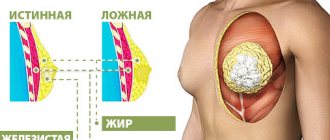What it is
Opinions differ about what exactly triggers the onset of the disease. Some doctors point to pancreatitis as the direct culprit, while others consider the genetic factor to be the decisive factor.
One thing is certain: lipomatosis is a secondary disease. Having felt a powerful negative impact, the pancreas, obeying the “instinct of self-preservation”, strives to replace the cells that died during pathological changes. In their place, surrogate fat analogues appear, unable to normally perform their immediate functions. Such a reaction of the affected organ to aggression is natural, but, alas, useless.
Symptoms of steatosis
Photo: opatsuvi / freepik.com
Steatosis is an insidious disease and is almost always asymptomatic or practically asymptomatic. With liver damage, some people complain of discomfort in the right hypochondrium, nausea, weakness and general poor health. In advanced cases (with cirrhosis), there may be jaundice (skin, eyes, mucous membranes), abdominal enlargement (due to ascites - accumulation of fluid in the abdominal cavity), dilation of visible blood vessels in the abdomen, redness of the palms, yellowness of the skin and mucous membranes, in men, breast enlargement.
The initial stages of pancreatic steatosis are also asymptomatic. If the disease has progressed, then not enough digestive enzymes are produced. The patient notes chronic diarrhea, light-colored and foul-smelling feces (due to the increased content of undigested fat in it). The body does not receive enough nutrients and the person loses weight, however, as a rule, he has no complaints of abdominal pain.
Causes
The causes, and to be more precise, the provoking factors of pancreatic obesity are:
- traumatic damage to its tissues;
- primary diseases of the body: pancreatitis, chronic gastritis, hepatitis, diabetes mellitus;
- undermining general immunity;
- heredity;
- age-related changes;
- excessive consumption of drugs;
- excessive addiction to fatty and fried foods:
- bad habits.
Chronic alcoholics and people prone to being overweight are at the forefront of the risk group.
What is pancreatic steatosis
There is a lot of talk about fatty liver, but almost nothing about fatty pancreas. But these very indirect signs of chronic pancreatitis can turn out to be quite direct signs of steatosis - the accumulation of fat in the pancreas. It occurs in both normal-weight and overweight patients. But still, obese people have a much higher risk. The likelihood of the disease also increases with age.
There is an opinion that steatosis “spreads” from the liver to the pancreas. Therefore, people with fatty pancreas almost certainly have fatty liver.
Against the background of non-alcoholic fatty disease, insulin secretion and sensitivity to it are disrupted, since this hormone is secreted by the pancreas. As a result, diabetes mellitus develops. However, diabetes itself can be a factor predisposing to steatosis.
Why do most people with gallstones have pancreatic problems? According to statistics, 70% of patients with gallstones develop inflammation of the pancreas.
Clinical picture
The insidiousness of pancreatic obesity lies in its asymptomatic nature in the early stages, when the disease can only be diagnosed using ultrasound.
Two main factors that add typos to the clinical picture of the disease:
- disruption of the natural functioning of the pancreas;
- compression of healthy tissue not only of the gland itself, but also of surrounding organs.
The degree of proliferation of adipose tissue may vary, depending on which part of the cells was affected. We can talk about obesity if more than 30 percent of normal gland cells have undergone mutations.
At the same time, it is not so much the number of mutated cells that plays a decisive role in the severity, but rather the location and crowding. When they accumulate in one place, a benign neoplasm is formed - a lipoma. For many years the patient may not even be aware of it. Only if the tumor begins to grow, squeezing the vascular system, nerve processes and ducts, will the symptoms begin to make themselves felt.
The main features are:
- girdle pain under the right hypochondrium, especially after eating;
- bloating accompanied by flatulence;
- incessant thirst;
- the appearance of small ulcers in the mouth;
- permanent urge to vomit, nausea;
- stool disorders, and fat and blood may appear in the stool;
- general weakness and apathy.
The structure of the pancreas
Impaired hormone production contributes to the development of endocrine diseases with a parallel increase in glucose levels. If drastic measures are not taken, the patient is at risk of developing diabetes. In addition, a kind of chain reaction occurs - the process of obesity spreads to another vital organ - the liver, causing the threat of hepatosis.
How dangerous is pancreatic steatosis?
Currently, scientists continue to study the effect of fat accumulation in the pancreas on the human body. The issue is quite controversial, but according to some data it can lead to:
- diabetes mellitus;
- disruption of the production of digestive enzymes;
- pancreatic cancer.
This is not hard to believe, because fatty liver disease can also cause cancer in the long term. And just as in the case of the liver, there is a great danger of starting the disease with the pancreas. This is the second silent human organ: there are no symptoms until the very late stages of the disease. This is why pancreatic cancer is the deadliest - it is detected when the patient can no longer be saved.
Possible symptoms of pancreatic steatosis include:
- pain in the epigastric region, radiating to the back. It intensifies when eating fatty foods and usually appears 30-45 minutes after eating;
- nausea, less often vomiting;
- rumbling in the stomach, bloating;
- alternating diarrhea and constipation or increased bowel movements.
Don’t look at the scales: how to lose weight without harm to your health. Member of the Russian Gastroenterological Association Sergei Vyalov talks about the basic principles of proper weight loss.
Diagnostics
Considering the complex specifics of the disease, at the first suspicion of lipodystrophy, you should immediately contact a gastroenterologist or endocrinologist. At the first stage of diagnosis, he needs to understand the clinical picture of the disease, listening to a detailed story about the complaints.
In particular, he will ask the patient about when the symptoms began to appear, how much he adheres to his diet, what chronic diseases he has suffered, what is the frequency of his consumption of alcoholic beverages? Another mandatory question: does any of your close relatives suffer from pancreatic obesity?
Then, having determined by palpation the approximate condition of the organ being examined, the doctor will refer the patient for laboratory and instrumental examination. Only on the basis of the entire complex of information obtained can the disease be treated by choosing the appropriate treatment regimen.
Causes of steatosis
The most common causes of pathology are alcohol abuse and excess weight, that is, steatosis is a lifestyle disease. Alcoholic steatosis develops with alcohol abuse (more than 2 servings of alcoholic drinks per day for women, and more than 3 for men. One serving is 341 ml of a drink with a strength of 5% (cider, beer), 142 ml of wine (12% ) or 43 ml of spirits (40%).
Photo: andranik-h90 / freepik.com
Causes of steatosis of non-alcoholic origin:
- obesity;
- long-term parenteral nutrition (introducing nutrients directly into the blood);
- rapid weight loss;
- diabetes;
- insulin resistance and high blood pressure;
- genetic predisposition;
- side effects of certain types of medications (corticosteroids, tetracyclines);
- gastric bypass.
Pancreatic steatosis is often observed in cystic fibrosis, Shwachman-Diamond syndrome, Johanson-Blizzard syndrome, and some viral infections.
Treatment
Effective treatment requires an integrated approach and includes:
- combination of traditional medicines with folk remedies;
- adjustment of life routine.
In severe cases, surgery is considered the optimal solution.
The duration of treatment is about two months. Upon completion, new tests are prescribed (blood biochemistry and ultrasound of the abdominal cavity) with the course repeated after six months.
Medications
Drug treatment is based on the use of drugs that correct the functioning of the pancreas and promote digestion processes.
- first of all, these are enzymes like Festal, Pancreatin, Mezim, which cope with heaviness in the stomach;
- Metoclopramide will help to cope with vomiting and nausea;
- antispasmodics (Platifilin, Ibuprofen, No-shpa) are prescribed as painkillers;
- stool disorders can be corrected with antidiarrheal drugs, for example Loperamide;
- Mebeverine calms intestinal spasms;
- Vitamin complexes have a general strengthening effect on the immune system.
If necessary, the doctor will also prescribe insulin therapy.
Additional Methods
Along with drug therapy, you can use folk remedies - infusions and decoctions of herbs, but this should only be done under medical supervision, since unwanted side effects are possible.
Among the common recipes, we note a decoction infused with equal amounts of St. John's wort, valerian, nettle and calendula - 10 grams per glass of boiled water. Taken in equal parts up to seven times a day.
Physiotherapeutic, hirudotherapy (we are talking about leeches), as well as sanitary or spa treatment using mineral waters have good results.
And the most important thing!
No medications will radically correct the situation unless you adhere to a healthy lifestyle and diet. Therefore, if the diagnosis is confirmed, it is necessary:
- forget about the existence of alcohol and cigarettes;
- make friends with physical exercise;
- Constantly control your weight;
- follow a diet.
Diet
The therapeutic diet for pancreatic obesity requires compliance with the following conditions:
- balance your diet: eat often and in small portions;
- avoid snacking before bed;
- reduce your total daily calorie intake;
- eat predominantly carbohydrate- and protein-containing foods.
- eat fiber-rich vegetables, fruits, berries;
- use boiling and stewing as a manufacturing method.
In certain cases, taking into account individual characteristics, the doctor may suggest fasting treatment.
And now - a list of foods that need to be excluded from life, if not forever, then at least until a stable remission occurs:
- any types of fast food;
- pickles and marinades;
- sweetened carbonated drinks;
- sweets, ice cream, butter products;
- meat, fish, dairy products (fresh and canned) with high fat and cholesterol content;
- products containing essential oils: citrus fruits, spicy herbs.
Is it possible to cure pancreatic obesity?
Fatty degeneration of the pancreas, as well as the liver, is a reversible condition until it leads to necrosis (death) of the organ cells. Treatment is also similar to non-alcoholic fatty liver disease, so you can kill two birds with one stone with the same steps. Well, that is. get rid of two diseases.
What should be done:
- lose weight. This is critical in the treatment of steatosis. The amount of fat in organs will decrease if its amount decreases overall in the body. But you need to lose weight gradually, without jerks. Otherwise, there is a high probability of encountering other problems: for example, gallstones;
- change your diet. This point is generally directly related to the previous one. The patient needs to switch to a therapeutic diet Table No. 5, low in fat;
- give up alcohol. Alcohol is the main enemy of the pancreas. Chronic pancreatitis in most cases is caused by alcohol abuse. Therefore there is a strict prohibition here;
- increase physical activity. Stop sitting your pants down. Now, in self-isolation mode, it is not possible to walk for 2-3 hours, but when your usual routine is restored, be sure to include walks in your daily program. In the meantime, you can do some light home exercises.
Among medications, it makes sense to take enzymes containing lipase in microspheres (Creon, Pangrol, Ermital), hepatoprotectors based on ursodeoxycholic acid (Ursosan), sorbents (Polysorb, Enterosgel), antispasmodics for pain (No-Shpa, Pentalgin).
Treatment of liver steatosis
There is no specific treatment for hepatic steatosis. The only way to combat it is to suspend the action of damaging factors:
- giving up alcohol;
- weight normalization;
- increasing the level of physical activity;
- normalization of blood sugar (diabetes).
In the initial stages, a change in lifestyle helps stop the disease and allows the liver to recover. In advanced cases (cirrhosis), the fight against damaging factors gives a chance to stop the progression of the disease, but unfortunately, a way to restore the structure of the organ has not yet been invented.
Symptoms of pancreatitis
Both forms of pancreatitis are accompanied by pain, disorders of the stomach and intestines, nausea and vomiting (these are the most characteristic symptoms of pancreatitis). However, it is worth taking a closer look at the symptoms of the acute and chronic forms of this disease.
Acute pancreatitis
Characterized by very severe pain. It is impossible to endure such pain, so an ambulance is immediately called for the patient and the patient is taken to the surgical department. The patient experiences pain in acute pancreatitis both in the upper abdomen and throughout the entire girth of the abdomen (girdling pain). Nausea, vomiting, and bloating appear. The patient complains of pain when palpating the abdomen. The heart rate increases and blood pressure may drop.
Chronic pancreatitis
Symptoms of chronic pancreatitis appear permanently and periodically worsen after exposure to various irritants. A person feels a constant dull pain in the epigastrium and both hypochondriums; due to a lack of enzymes for digesting food, diarrhea, bloating in the abdomen, and unstable stool may occur. During periods of exacerbation of pancreatitis, the patient should follow the instructions of his doctor or contact an ambulance service.
Constipation with pancreatitis
With reactive inflammation, constipation may occur. But its cause is not the disease itself, but a violation of the outflow of bile. Constipation needs to be treated, but the underlying cause must first be ruled out.








